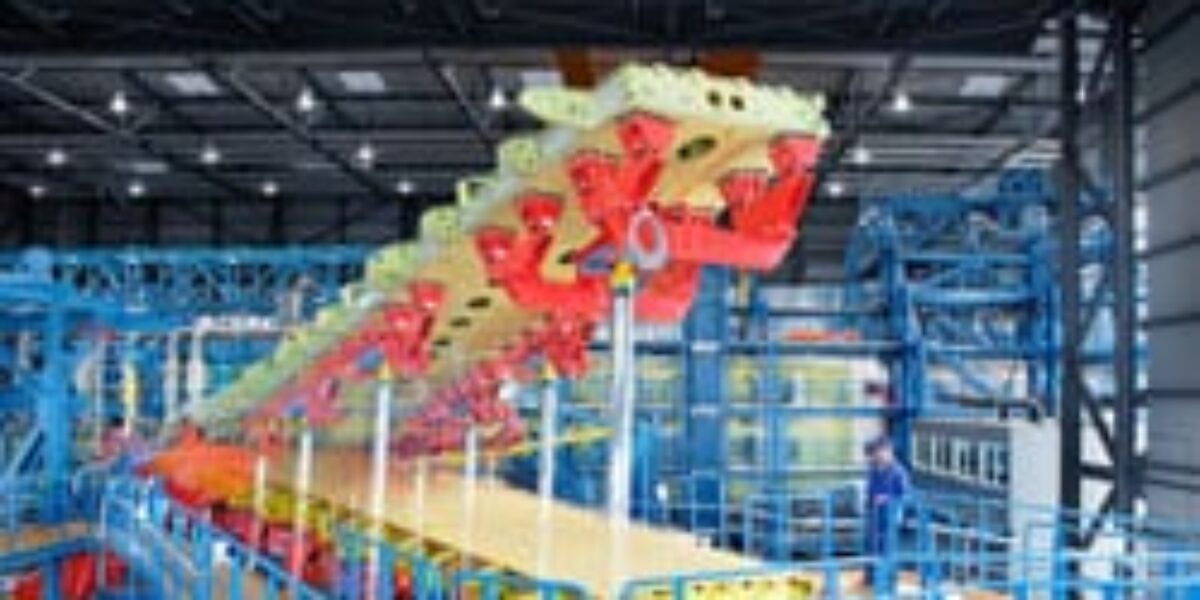Saxony in its Stride
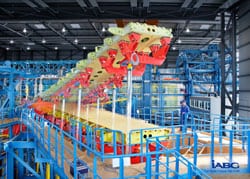
Saxony has many pictures that tell many tales, creating lots of history: The digital heart of the semiconductor industry beats in Dresden. Silicon Saxony is a network of 280 commercial enterprises and research institutions, is Europe’s leading and the fifth largest microelectronics cluster in the world. Geared towards the future, researchers and young entrepreneurs between Leipzig and Dresden are working hand in hand in the biotechnology and environmental technology sectors.
The traditional heart of Saxony’s economy is found in the Chemnitz-Zwickau region. Whether it is mechanical engineering or more than 100 years of ‘Auto-land Saxony’– a strong and highly efficient industry has evolved from smart ideas and intelligent solutions. The commercial center Leipzig is a vibrant and bustling trade fair and media city; its airport is Europe’s most modern air cargo hub providing 24/7 services.
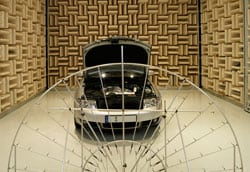
To make a long story short: Saxony is a top location for such globally active enterprises as, for example, Volkswagen, BMW, and Porsche, GLOBALFOUNDRIES and Infineon, DHL and Bombardier Transportation, SolarWorld and many more. Curious to learn more? Then read on!
Seen from a geographical perspective, Saxony is located right in the heart of Europe. Since time immemorial, it has been the intersection of the major thoroughfares on the continent. While in the Middle Ages the Via Regia (Rhineland – Eastern Europe) and the Via Imperii (Italy – Baltic Sea) had been the most important crossroads, today it is the E 40 (France – Kazakhstan) and the E 55 (Sweden – Greece).
Its central location has proven to be a real geographical advantage for Saxony. This is why the logistics giant DHL decided to relocate its European air cargo hub from Brussels to Leipzig. In addition to the ideal location, the environment is perfect here as well. At Leipzig/Halle Airport, cargo liners can be handled 24 hours per day and 365 days per year; the best possible prerequisite for mastering the constantly increasing airfreight volume.
And the region also provides a superbly developed transportation network which interconnects rail lines, expressways, and waterways with great mobility and versatility. This permits the quick forwarding of goods to the expanding markets in Eastern Europe.
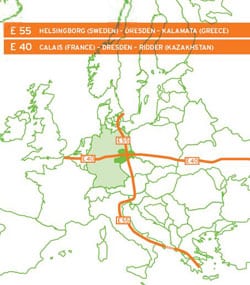
A Logistic Masterpiece
Saxony’s transportation infrastructure is capable of successfully handling extreme challenges. For example, the gigantic A380 ‘landed’ on the Elbe River right in the middle of Dresden’s cargo port in 2004. To be more precise, the air giant; which was still incapable of flight, was actually delivered by ship. The rest of its trip was successfully continued on the federal expressway. Its destination was the large scale test hangar of the IABG mbH at Dresden Airport where the new super-jet was tested to the limits of its static load capacity.
Already in the 18th century, the Industrial Age began in Saxony with the founding of the first machine construction enterprises. The region, thus, headed the field on the European mainland. The first locomotive to be designed and engineered in Germany, the first six cylinder engine, the centrally positioned gearshift lever in automobiles – all of these pioneering innovations come from Saxony.
In the mid19th century, the industrial cities Chemnitz, Zwickau and their suburbs were the region with Europe’s highest per capita income.
And the success story continues: Since 1990, about 6,000 companies have set up or purchased business premises in Saxony. Saxony’s economy has increased by 20.3 percent since 2000; thus, exhibiting the highest economic growth of all federal states in Germany.
Auto-land Saxony
BMW, Porsche, Volkswagen – big brands. They are all active in Saxony today. And their commitment is not without reason. The experience dates back to the time when the legendary August Horch established his automobile factory in Zwickau. That was more than one hundred years ago. The first vehicles which the auto pioneer had designed bore his name: HORCH. Later he founded the ‘Audi’ brand.
Since that time, the automobile industry has become the predominant economic branch in Saxony. Today, it accounts for more than one fifth of all industrial sales in the region.
But ‘Auto-land Saxony’ – that’s not just the renowned automakers. About 750 supply companies form the backbone of Saxony’s automobile construction industry.
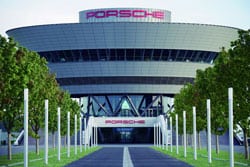
The Cradle of German Mechanical Engineering
Saxony can justifiably call itself the cradle of German mechanical engineering. The ingenious Chemnitz entrepreneur Carl Friedrich Bernhard returned to Saxony from a ‘business trip’ to England with the spinning master and machine builder Evan Evans. With the help of Evans, Bernhard transformed the spinning mill of his family in Harthau into the world’s largest mechanical spinning mill as of 1798. This marks the beginning of the triumphant start of industrialization and the virtually unparalleled success story of this branch in Saxony.
Still today, machines produced in Chemnitz enjoy an excellent reputation throughout the world. For example, such international, Chemnitz-based corporate groups as NILES-SIMMONS-HEGENSCHEIDT and StarragHeckert are active on the global market. Today, Germany’s oldest still existing tool making factory – the UNION Werkzeugmaschinen GmbH in Chemnitz – is a leading manufacturer of boring mills and machining centers.
Its central location has proven to be a real geographical advantage for Saxony. This is why the logistics giant DHL decided to relocate its European air cargo hub from Brussels to Leipzig.
‘Silicon Saxony’
Every second chip produced in Europe bears the imprint ‘Made in Saxony’. GLOBALFOUNDRIES and Infineon Technologies have expanded and continue to expand their Dresden Fabs into the world’s most modern semiconductor production sites. Saxon enterprises and research institutions are the global leaders primarily in such innovative fields as ‘GreenIT’, organic & printed electronics, and mobile communication of the next generation.
To make a long story short: ‘Silicon Saxony’ is Europe’s largest microelectronics cluster; and when it comes to technology, it is one of the most innovative ICT clusters in the world. Approximately 1,500 companies with more than 43,000 employees develop, manufacture, and promote integrated circuits, serve the chip industry as materials and equipment suppliers, produce and distribute electronic products and systems based on integrated circuits, or develop and promote software at this location.
Green-Tech made in Saxony
Over the past few years, environmental technology has evolved into a significant economic factor in Saxony. Specifically in the solar industry, the region ranks among the top locations within Europe. Saxony’s enterprises active in this sector generate a turnover of more than EUR 1.6 billion today. Saxony’s solar component production employs more people than any other German federal state. For example, Europe’s largest producer of multi-crystalline silicon wafers – SolarWorld’s subsidiary Deutsche Solar AG – is located in Freiberg.
However, the Saxons are not only capable of generating energy from solar power. At CHOREN Industries in Freiberg, straw is literally turned into gold. ‘SunDiesel’ is the name of the high grade, low emission fuel which can be extracted from virtually any renewable biomass in the future.


